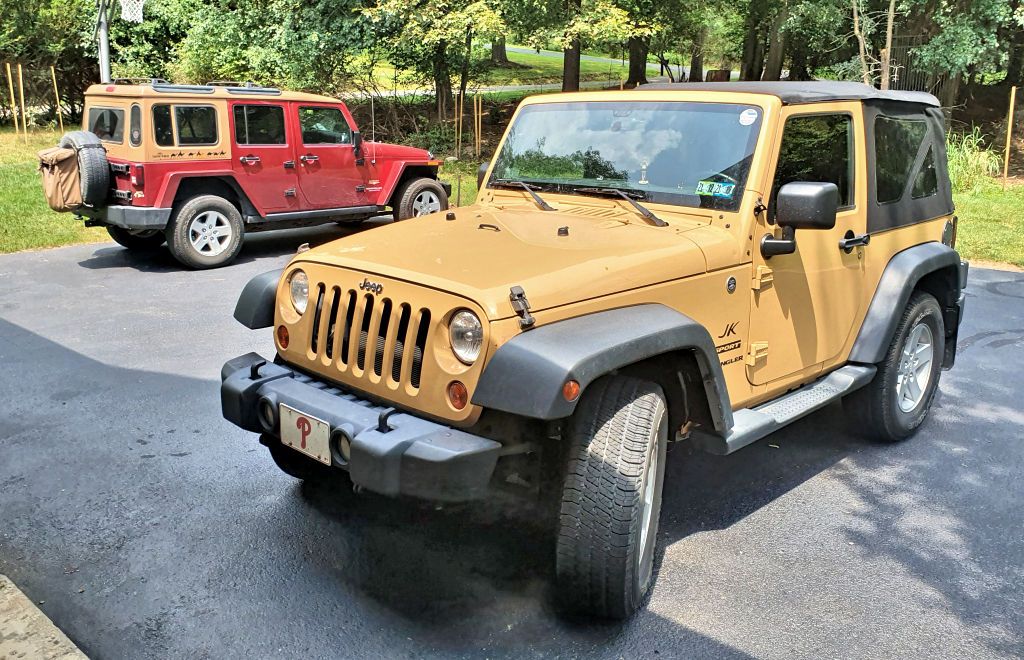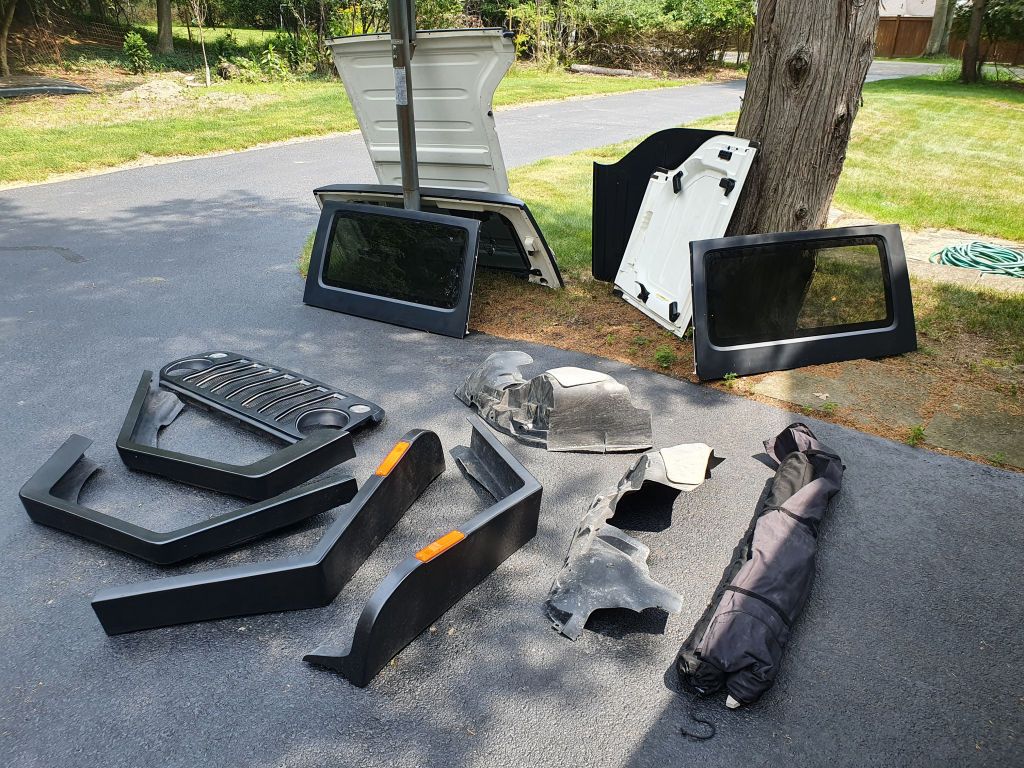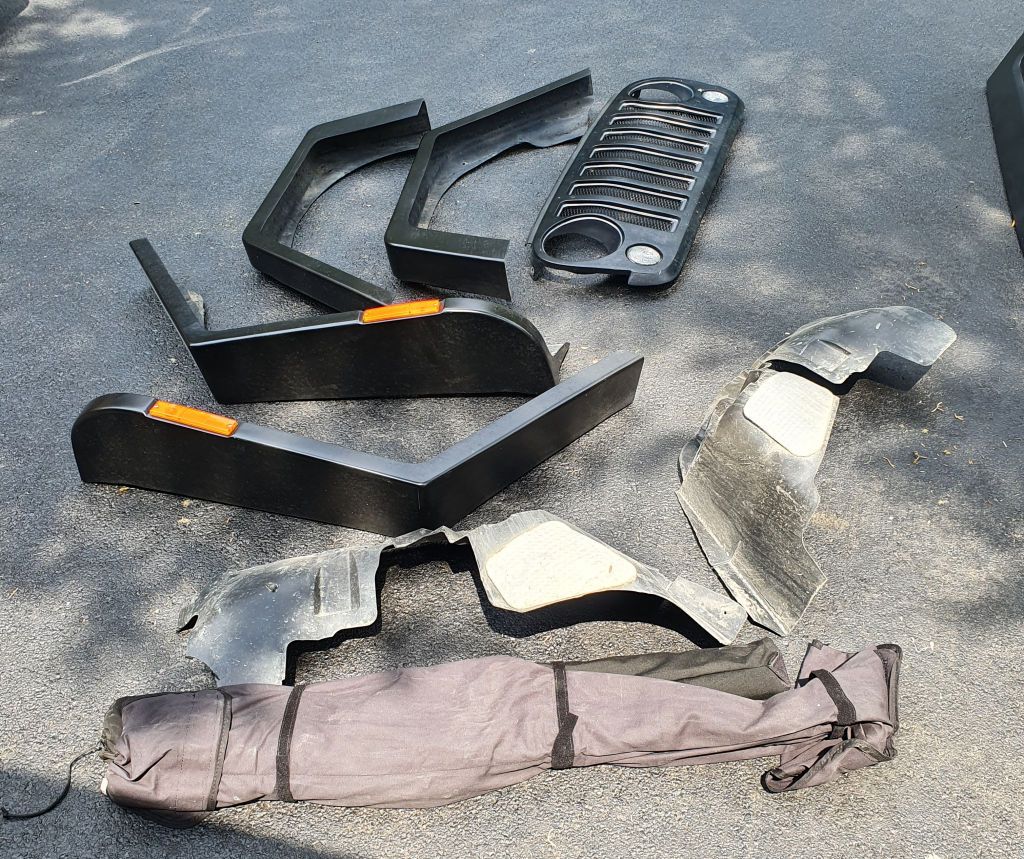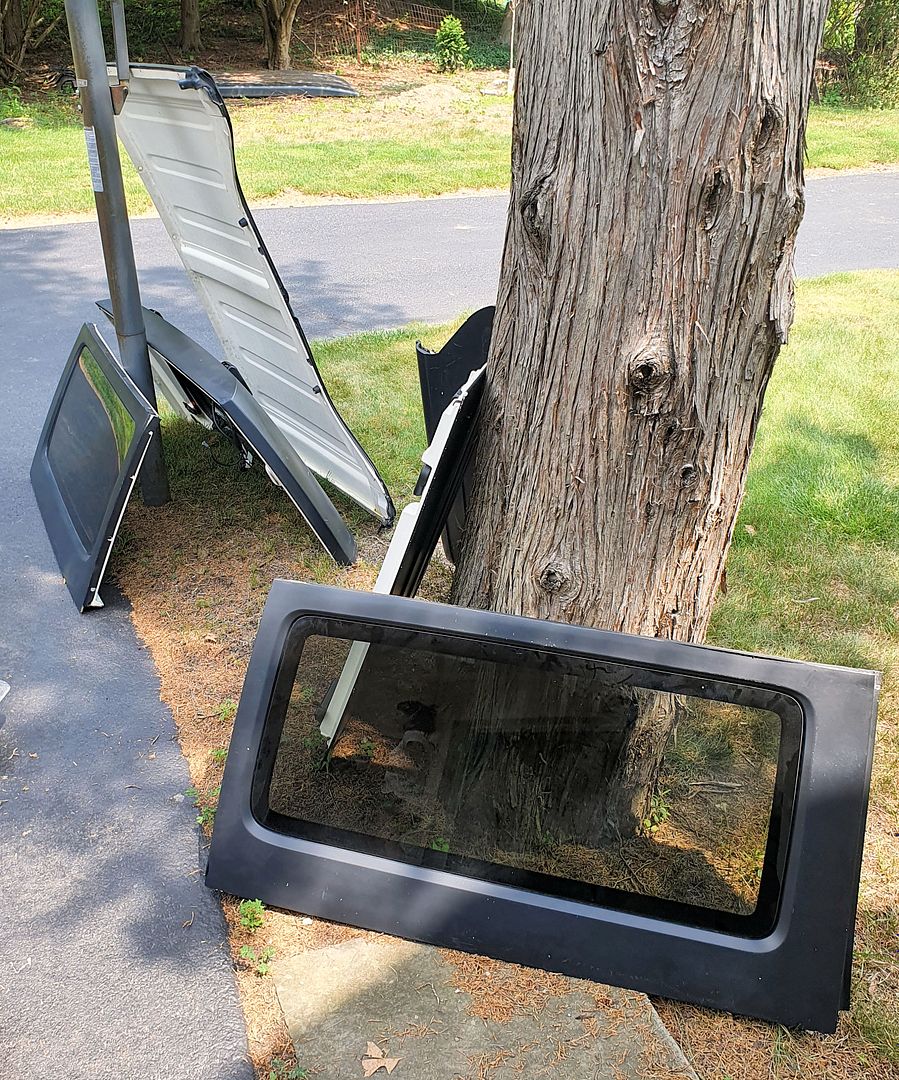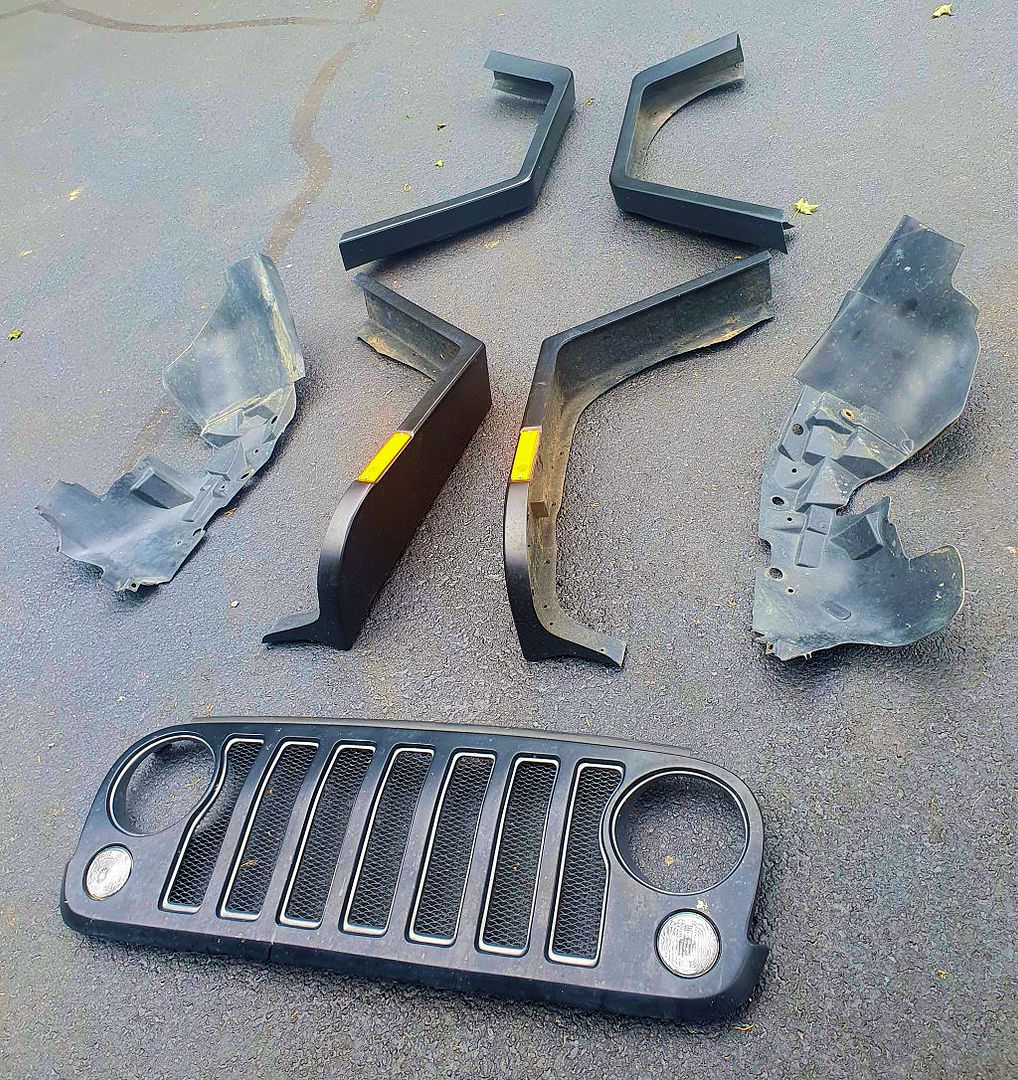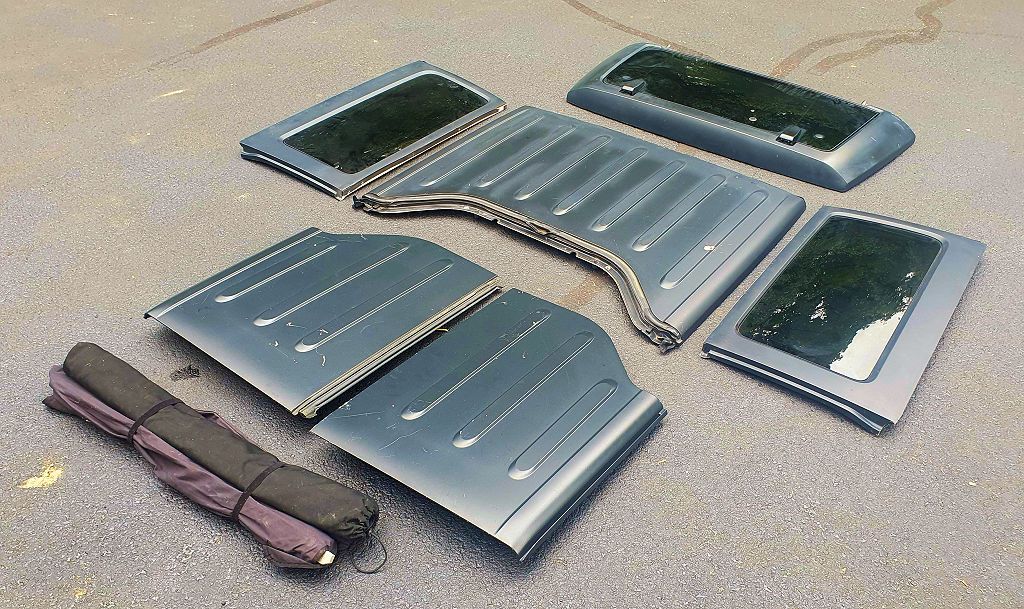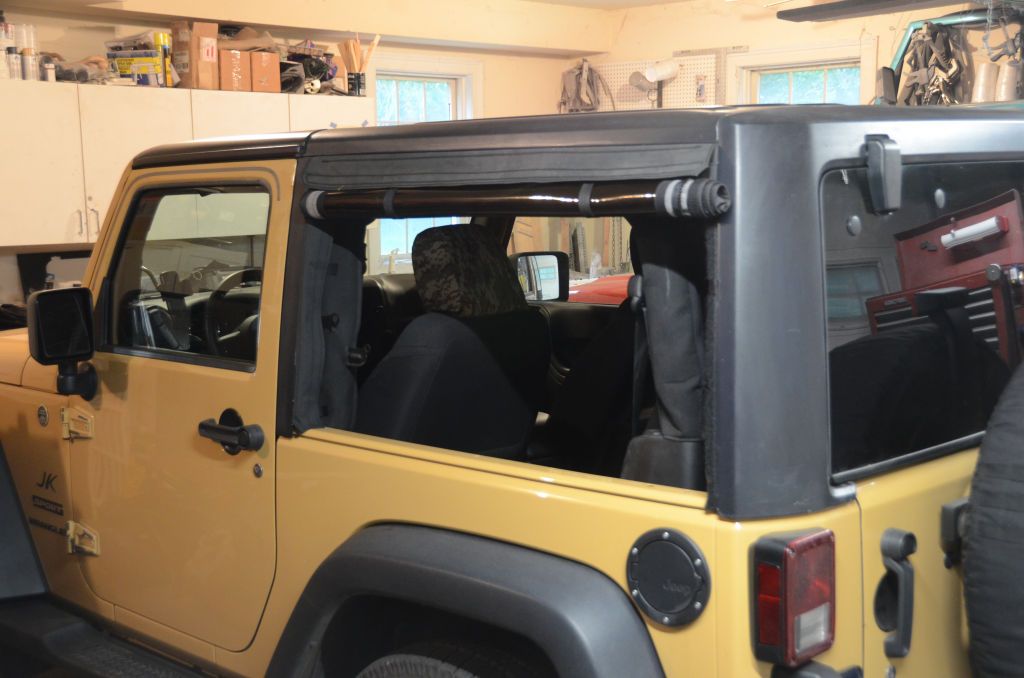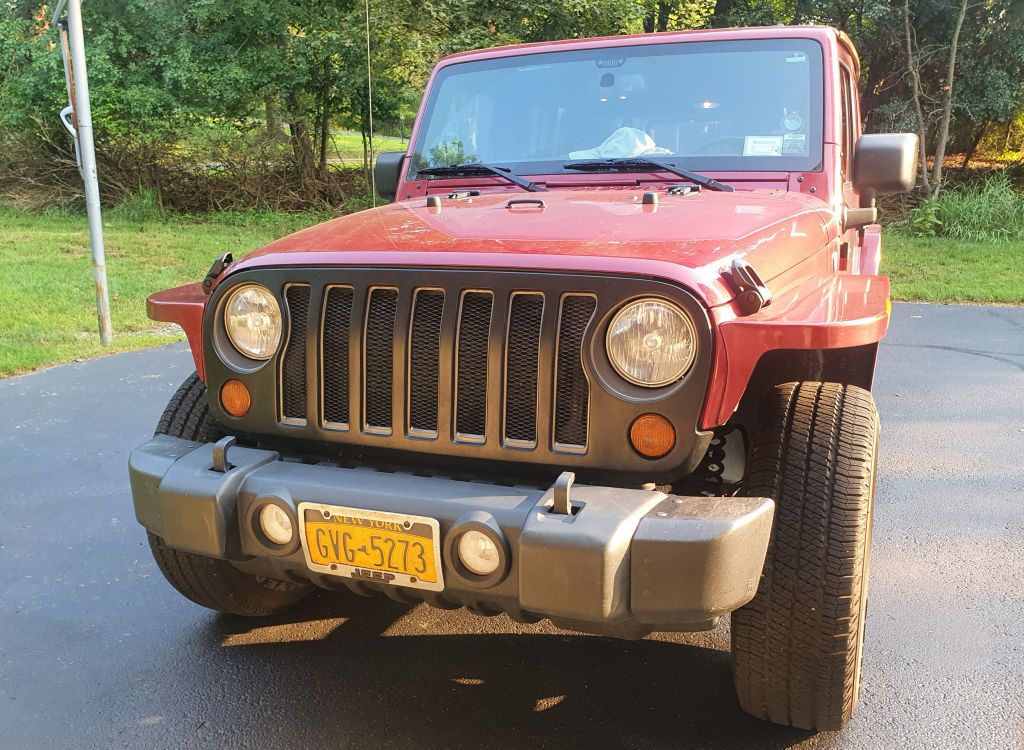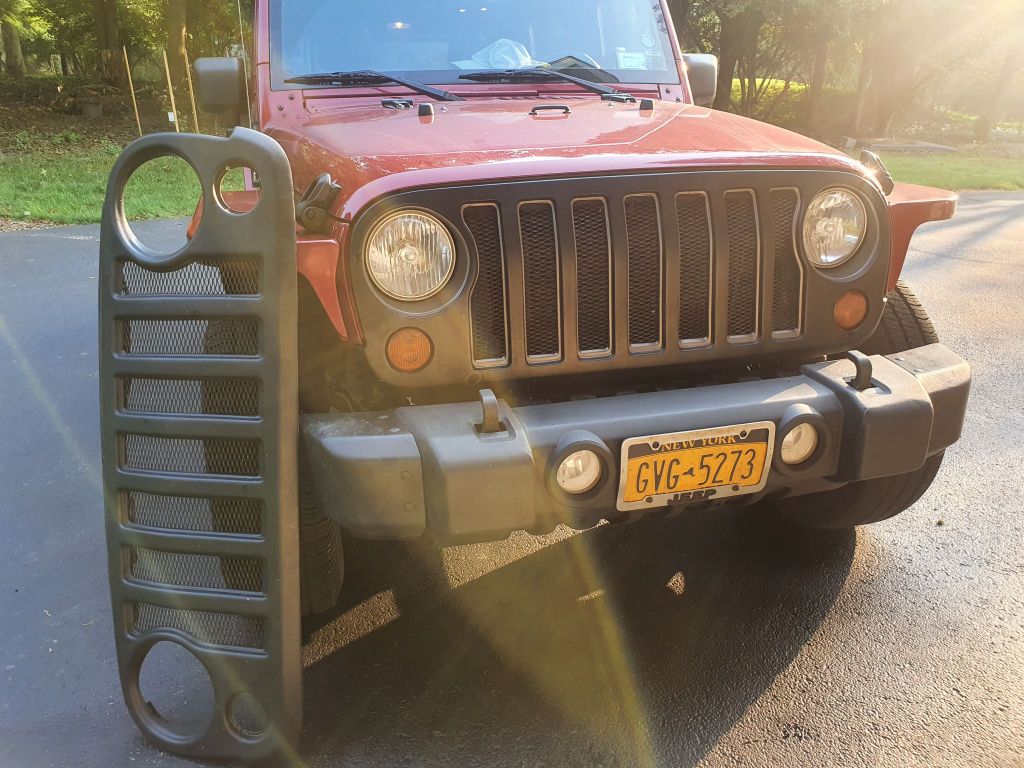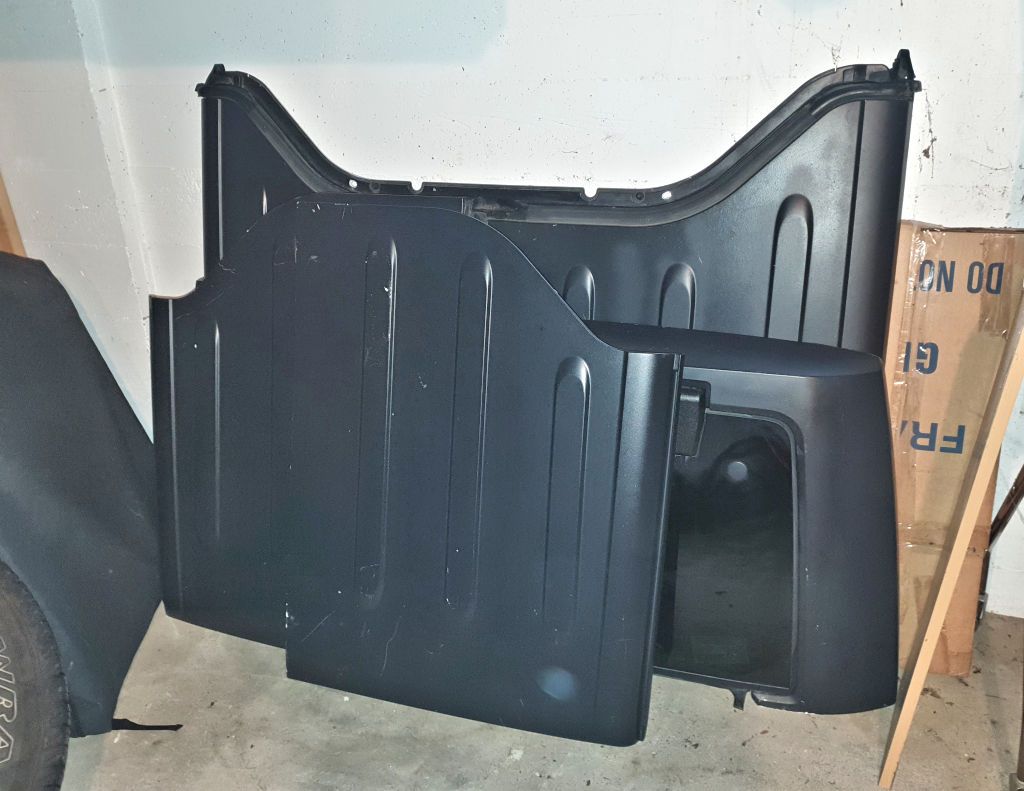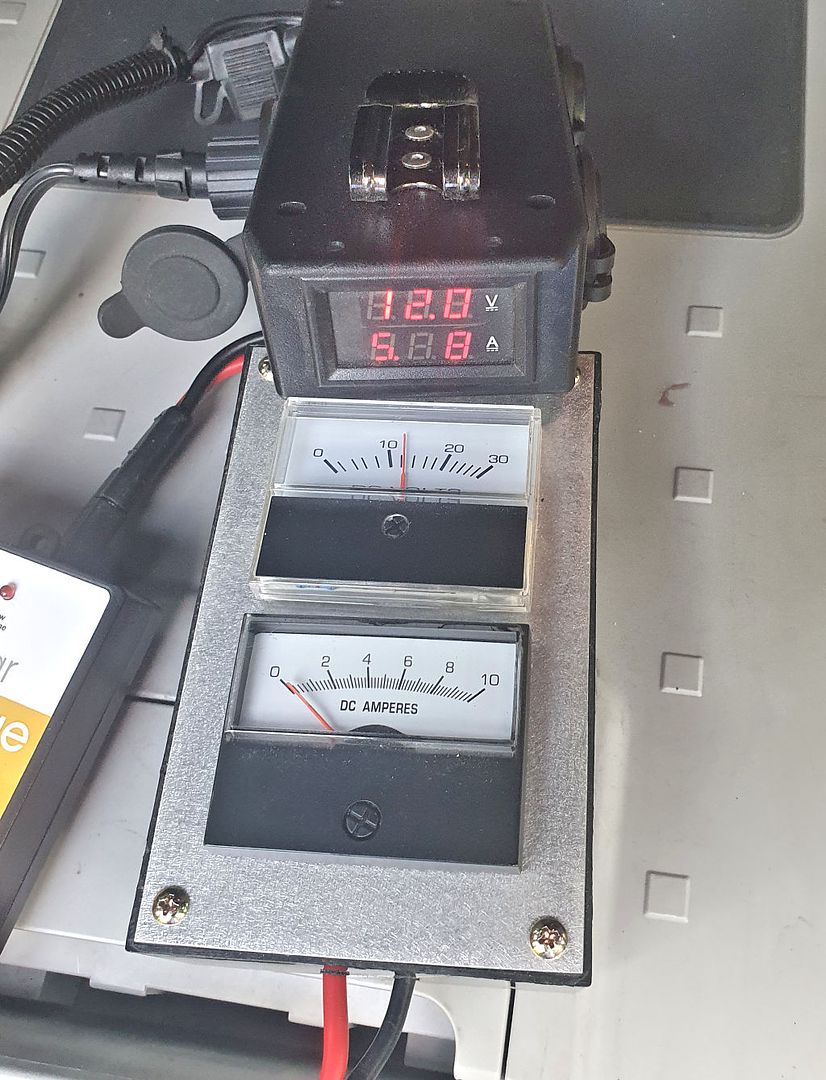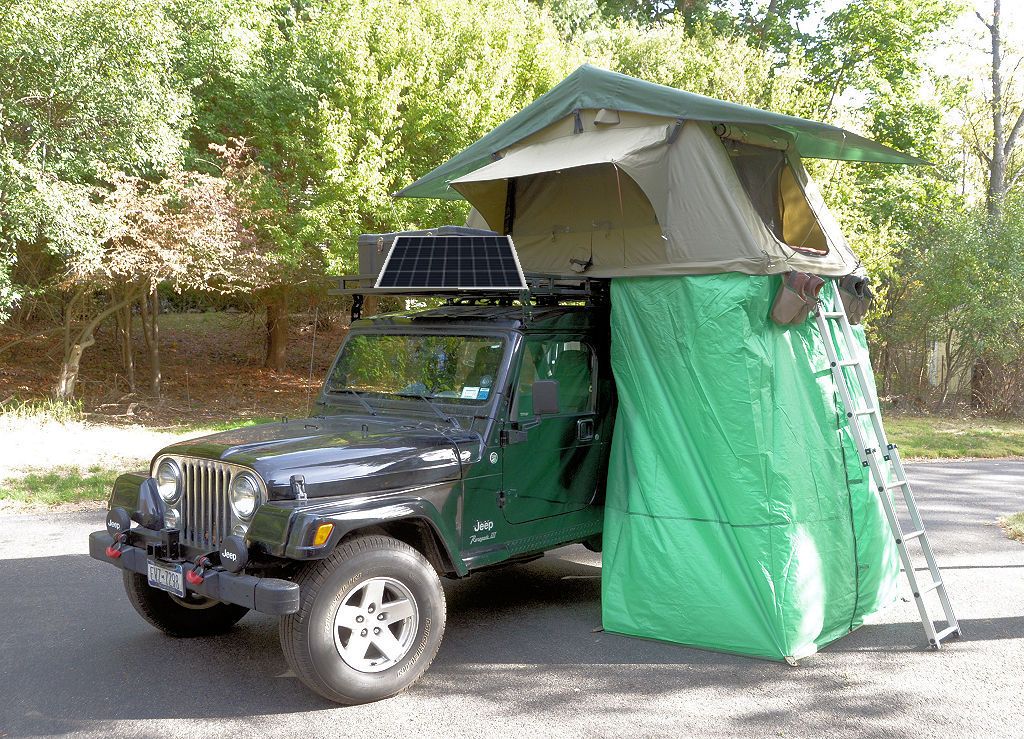I've tested the solar panel in direct sun and on an overcast day when the sun wasn't directly visible, and there was one last test I needed to do before deciding how the panel should be mounted - testing in the shade. What if the panel was in the shade either because of how the Jeep is parked or perhaps because the roof top tent is erected and is blocking the path of the sun to the panel?
I set up the panel this afternoon so it was in direct sun and I started the fridge. Current from the panel was about 2.5 amps and the fridge, starting warm, was drawing between 5 and 6 amps. Then I used a large piece of cardboard to prevent direct rays of the sun from reaching the panel. The panel was still lit by ambient light, but no direct rays were hitting it. Here's the result:
Due to display multiplexing, the camera didn't capture all of the digits of the amperage, but it was reading 5.78 at the time the photo was taken. The panel meter is showing just over 12v from the panel but basically no current.
Conclusions from all of the testing to date:
1. In full sunlight with the panel aimed at the sun, the peak power output I measured was 6 amps.
2. On an overcast day, with the sun not directly visible except as a slightly brighter area in the cloudy sky, the panel delivered 1 amp. That was enough to keep the fridge battery fully charged as the fridge cycled on and off on an 80+ degree day.
3. On a sunny day with the panel in the shade, there isn't enough output to charge the battery.
I think I've done enough testing and learned enough about the behavior of the panel in various conditions to begin the design process for a panel mount. Some initial design parameters:
a. My primary design goal for this project is to keep the kitchen battery charged. This is different than a goal of always maximizing the current output of the panel, since an output of 1 amp has tested to be enough to maintain the charge. If a mount design can also always maximize current output, that's a bonus, but not strictly necessary to meet my design goals.
b. The panel is large (26" x 36") and not light (15 lbs) so a plan is needed for stowing it when not in use. If it can stay on the mount and be stowed, perhaps by sliding/swinging it under the roof rack, that would be ideal. A slide mount as shown below would be great, except this won't meet design goal "d" below in some locations.
c. Aiming isn't strictly necessary to keep the fridge battery charged - on a sunny day there's more than enough current output to maintain the charge without aiming and on a overcast day the 1 amp output is enough to keep the battery charged and aiming doesn't make much difference under overcast skies. Since aiming doesn't seem to be strictly necessary to keep the kitchen battery charged, a mount like the one below that allows some degree of aiming may be more complexity than is required.
d. If mounted on the roof rack or the Jeep somewhere (the hood?), a fixed location will dictate which direction the Jeep is parked, especially if a roof top tent is erected and blocks the direct sun. "Aiming" the Jeep may not always be practical based on the camp location.
I've got several ideas for a mounting solution that will meet the design criteria (and possibly also the optional criteria to maximize current output from the panel) and I'll do some preliminary design work to to explore feasibility of the ideas.
In the meantime, I welcome any thoughts or comments you have on my testing, my conclusions, my design parameters or possible mount ideas you may have.
 .
.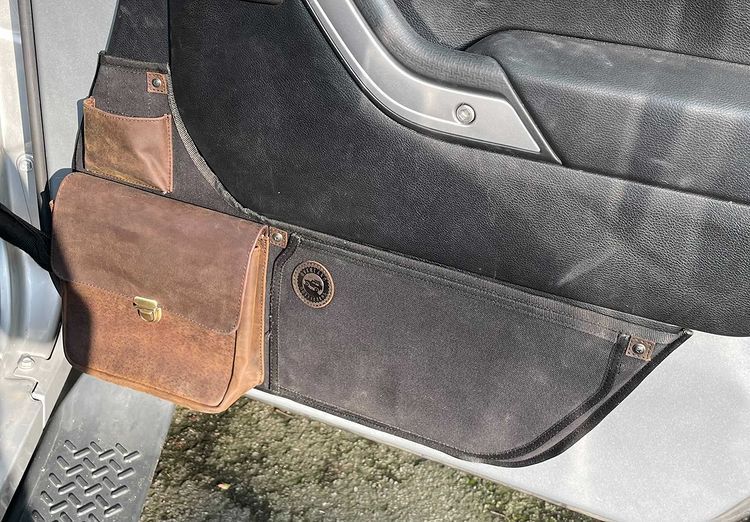
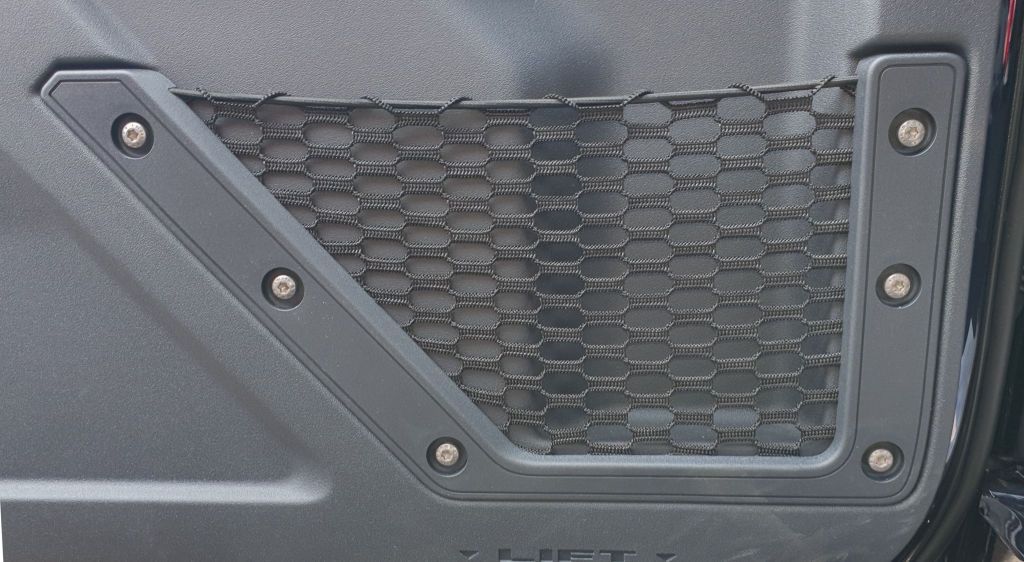
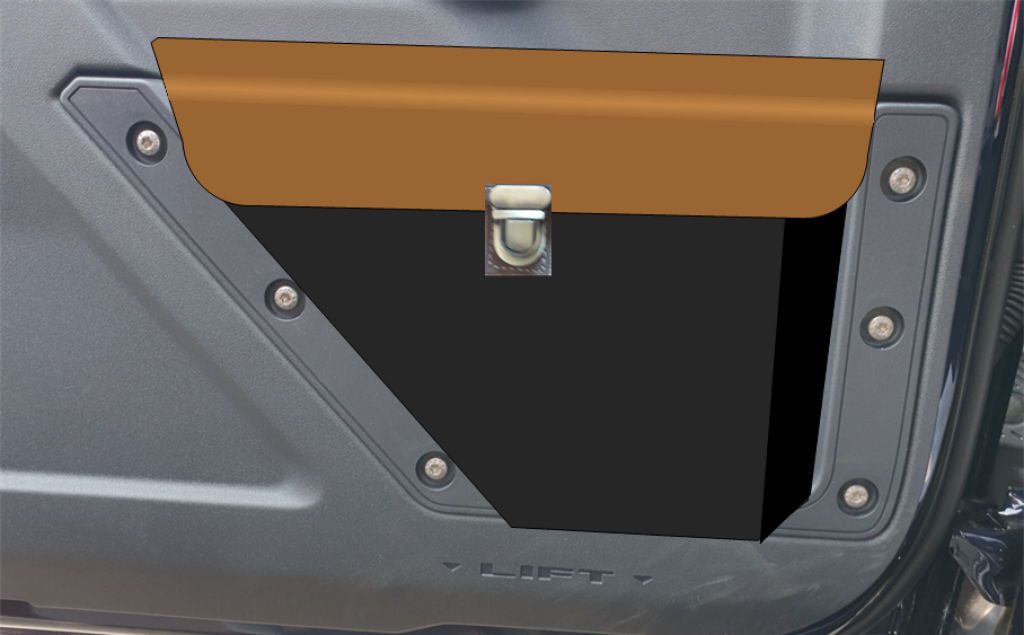
 .
.



.jpg)
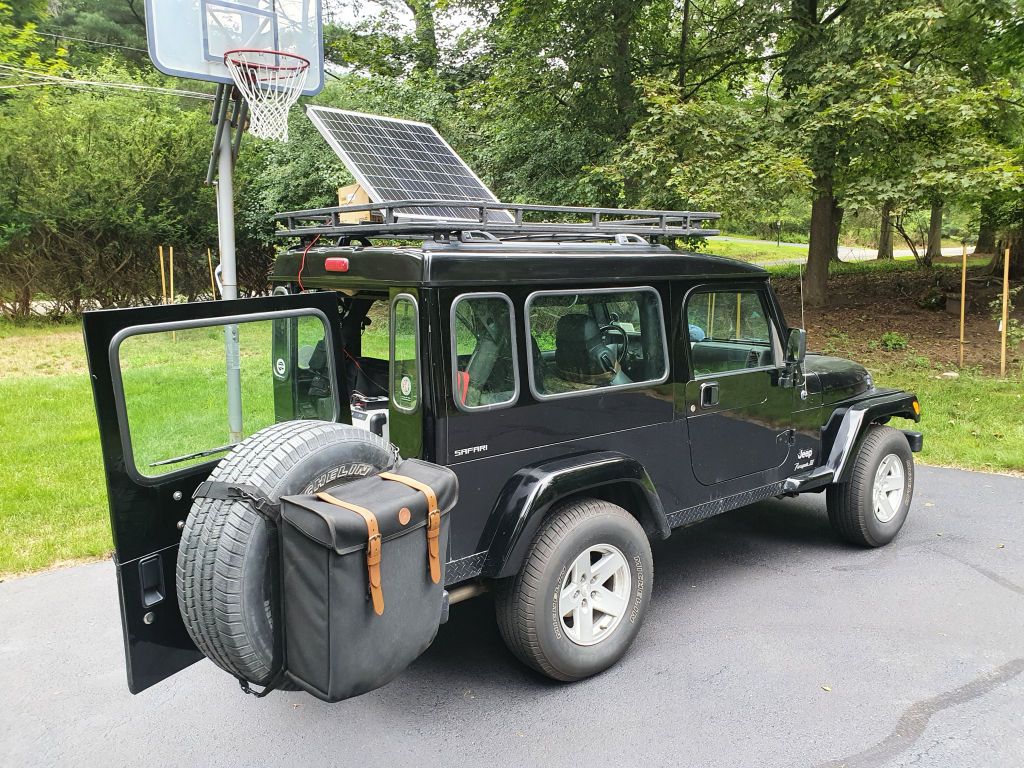
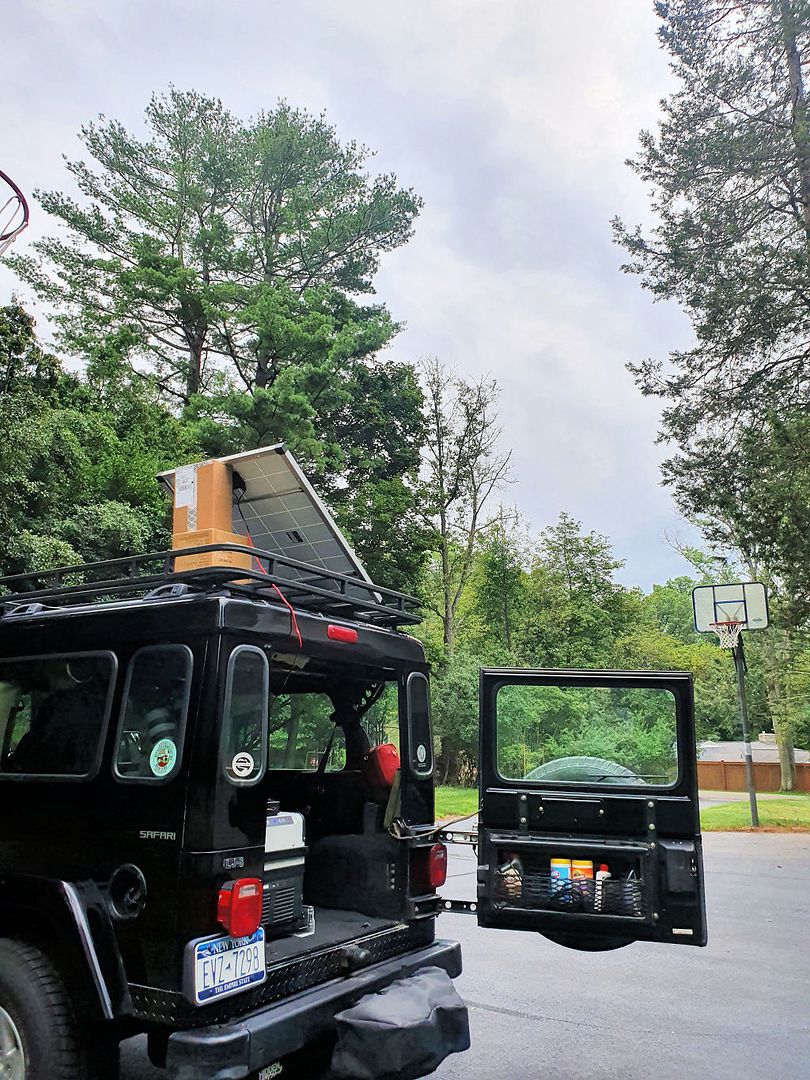
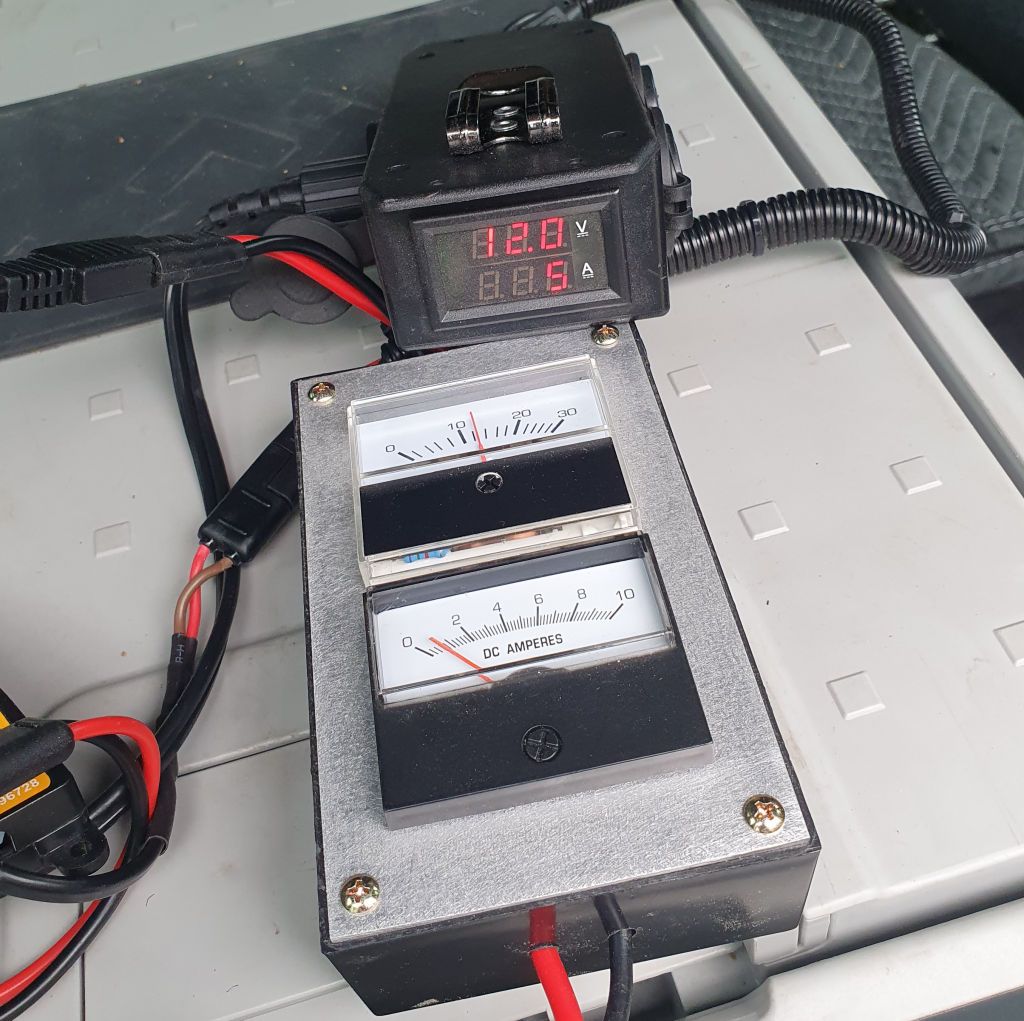
.jpg)
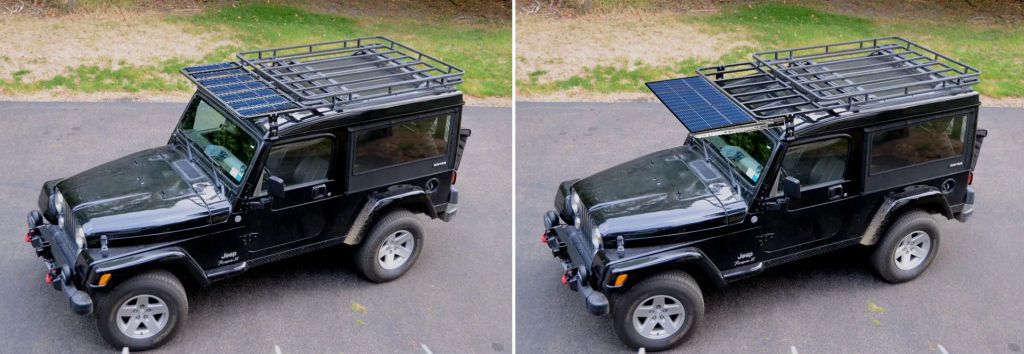
.jpg)
